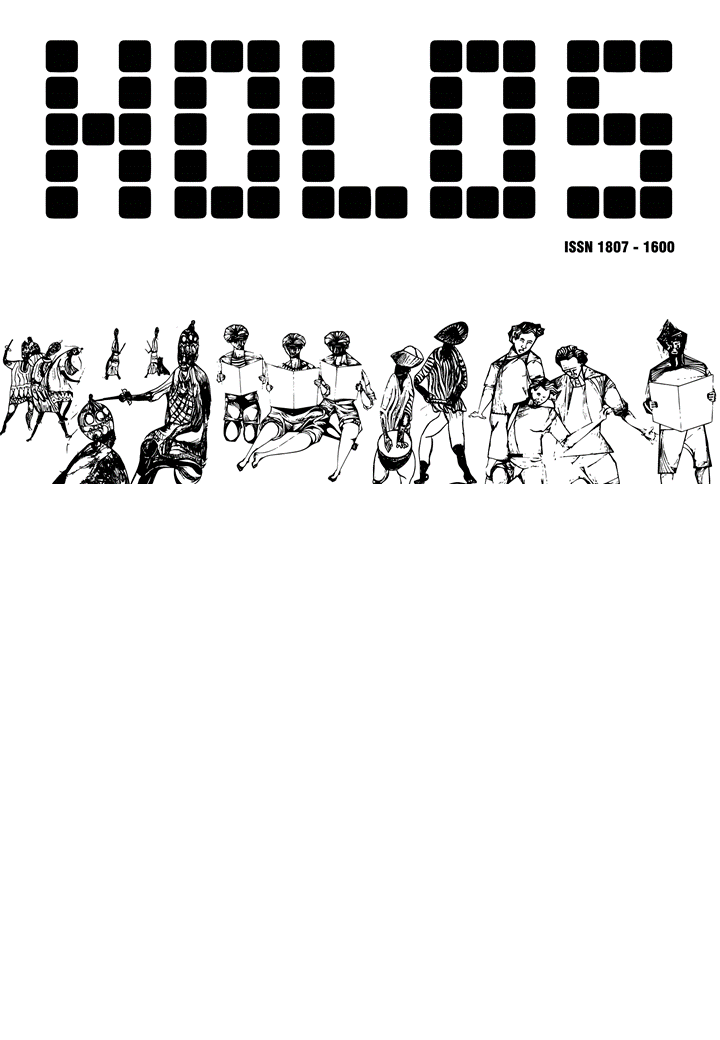ARQUITETURA DE UM SISTEMA DE SOFTWARE DE SUPORTE AO PROCESSO DE ENSINO-APRENDIZAGEM
DOI:
https://doi.org/10.15628/holos.2017.5335Palavras-chave:
Arquitetura, ensino, aprendizagem, ensino-aprendizagem, processo de ensino-aprendizagem.Resumo
Este trabalho tem o objetivo de apresentar uma arquitetura de um sistema de software que tenha a capacidade de conceder um suporte mínimo no processo de ensino-aprendizagem utilizado por cada professor do Instituto Federal de Educação, Ciência e Tecnologia. Mais especificamente, esse suporte visa realizar um mapeamento simplista do entendimento dos alunos em relação aos assuntos abordados em sala de aula de cada professor. Além de apresentar a arquitetura mencionada, este trabalho tem também o propósito de realizar a validação de tal arquitetura, mostrando e explanando sobre os resultados obtidos.Downloads
Referências
BRAUDE, E. (2005). Projeto de Software: da programação à arquitetura: uma abordagem baseada em Java. Porto Alegre: Bookman.
ROZANSKI, N. & WOODS, E. (1ª Edição). (2005). Software Systems Architecture: working with stakeholders using viewpoints and perspectives. Addison-Wesley.
PRESSMAN, R. S. (6ª Edição). (2006). Engenharia de Software. São Paulo: McGraw-Hill.
BASS, L., CLEMENTS, P. & KAZMAN, R. (2ª Edição). (2003). Software Architecture in Practice. Addison-Wesley.
BOSCH, J. (2000). Design & Use of Software Architectures. Addison-Wesley.
SHAW, M. & GARLAN, D. (1996). Software Architecture. Prentice-Hall.
BUSCHMANN, F. (1996). Pattern-Oriented Software. Wiley.
KIM, Y., JEONG, S., JI Y., LEE, S., KWON, K. H. & JEON, J. W. Smartphone Response System Using Twitter to Enable Effective Interaction and Improve Engagement in Large Classrooms. IEEE Transactions on Education, volume (58), pp. 98–103.
KIM, E. K., CHO, J. E. & JUNG, E. C. The Study on Alternatives for Activating Communication Between Instructor and Students in Large Scale Lecture. J. Korea Soc. Design Forum, volume (22), pp. 225–234.
HWANG, C. I. & LEE, S. H. An Analysis of Hindrance Factors of Students' Questioning in the University Lecture Class. J. Educ. Studies, volume (42), pp. 181–212.
LEE, Y. S. The Influence of Smartphones on the Off-Task Behavior of College Students. J. Yeolin Educ., volume (20), pp. 221–250.
HAKE, R. R. Interactive-engagement versus traditional methods: A six thousand-student survey of mechanics test data for introductory physics courses. Amer. J. Phys., volume (66), pp. 64–74.
SIMONI, M. Using tablet PCs and interactive software in IC design courses to improve learning. IEEE Trans. Educ., volume (54), pp. 216–221.
LIU, T., LIANG, J., WANG, H., CHAN, T. & WEI, L. Embedding EduClick in classroom to enhance interaction. Proc. ICCE, pp. 117–125.
CALDWELL, J. E. Clickers in the large classroom: Current research and best-practice tips. CBE-Life Sci. Educ., volume (7), pp. 9–20.
MARTYN, M. Clickers in the classroom: An active learning approach. EDUCAUSE Quart., volume (30), pp. 71–74.
RUSH, B. R. et al. The effect of differing audience response system question types on student attention in the veterinary medical classroom. J. Veterinary Med. Educ., volume (37), pp. 145–153.
DOUGLAS, D. Clickers: A new teaching aid with exceptional promise. Astron. Educ. Rev., volume (5), pp. 70–88.
JUDD, B. C. & GRAVES, C. A. Cellular STEM. Proc. Int. Symp. Cluster, Cloud Grid Comput., pp. 799–804.
KOLB, L. Adventures with cell phones, Educ. Leadership, volume (68), pp. 39–43.
COCA, D. M. & SLISKO, J. Software socrative and smartphones as tools for implementation of basic processes of active physics learning in classroom: An initial feasibility study with prospective teachers. Eur. J. Phys. Educ., volume (4), p. 17.









































